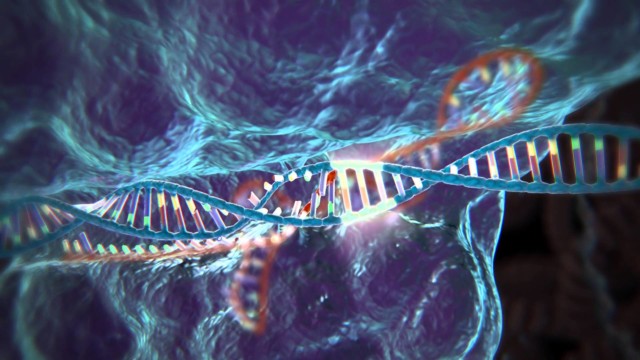A Chinese team has become the first to use gene splicing technology on a human being, potentially unlocking the ability to alter genes in the fight against diseases such as cancer.
At Sichuan University West China Hospital in Chengdu, a team led by oncologist Lu You used the CRISPR-Cas9 gene splicing technology to inject gene altered cells into a patient with highly aggressive lung cancer.
https://twitter.com/Alexis_Verger/status/798817523625885696
CRISPR-Cas9 is a technology that depends on a DNA-splitting enzyme, paired with a highly focused molecular guide, which tells those enzymes where to split.
In this particular trial, the researchers used CRISPR-Cas9 to disable a gene code for a protein called PD-1. The protein is specifically known to stunt a cell’s immune response to cancer.
Once Lu’s team cultured the altered cells, stabilizing them and multiplying their numbers, they injected them back into the patient. The theory is that the revised cells – minus the PD-1 protein – will be able to help defeat the cancer.
Lu’s team say the first stage went smoothly and they plan to schedule up to three more sets of injections. Over the next six months, they will monitor the patient – both for benefits from the treatment, and any adverse effects that might occur.
Lu’s team plans to treat ten people as a part of ongoing human trials. They received ethical approval from the hospital’s review board on July 6.
WATCH: CRISPR-Cas9 explained
A visualization from the McGovern Institute at MIT explains the science and approach of CRISPR-Cas9.
Doctors and researchers around the world have been gearing up for human trials using CRISPR-Cas9, which is considered more efficient and simpler than previous gene therapies.
Carl June, an immune specialist at the University of Pennsylvania and adviser for upcoming U.S. CRISPR trials, told Scientific American the competition to advance this new technology is a positive thing.
“I think this is going to trigger ‘Sputnik 2.0’, a biomedical duel on progress between China and the United States, which is important since competition usually improves the end product,” June said.
In the U.S., the National Institutes of Health (NIH) have given the go-ahead for CRISPR-Cas9 research in humans, but approval from the Food and Drug Administration (FDA) is still pending.
As CRISPR-Cas9 technology advances, scientists hope they will be able to someday snip out genes from genetically inherited diseases, such as cancer, sickle-cell anemia, Parkinson’s disease before they have the chance to manifest in the body.
There have already been astounding results in non-human trials. For instance, according to Cell Research magazine, scientists have used CRISPR-Cas9 to reverse engineer DNA makeup of an endangered ferret species to an earlier generation that did not contain the damaging genetic mutation.
CRISPR-Cas9 is also being used to isolate genes that may fight off the Zika and Dengue virus. Both in the mother and the child in vitro.
Still, amidst optimism, there is caution moving forward with human trials. CRISPR-Cas9 is still a new technology and results have not always been predictable. In some cases, the gene splitting has been miscalculated or misfired – causing or worsening the exact mutations it seeks to remove.
While the risks involved with trials may seem acceptable in laboratory animals, testing on humans is still a subject of controversy – ethically, legally, and morally – in each nation that hosts research.
The effectiveness of these first human trials, along with other research using CRISPR-Cas9 will help guide those debates moving forward.
 CGTN America
CGTN America
 CRISPR is a technology that employs a DNA-splitting enzyme along with a highly focused molecular guide that tell those enzymes where to split. (Graphic: McGovern Institute)
CRISPR is a technology that employs a DNA-splitting enzyme along with a highly focused molecular guide that tell those enzymes where to split. (Graphic: McGovern Institute)
